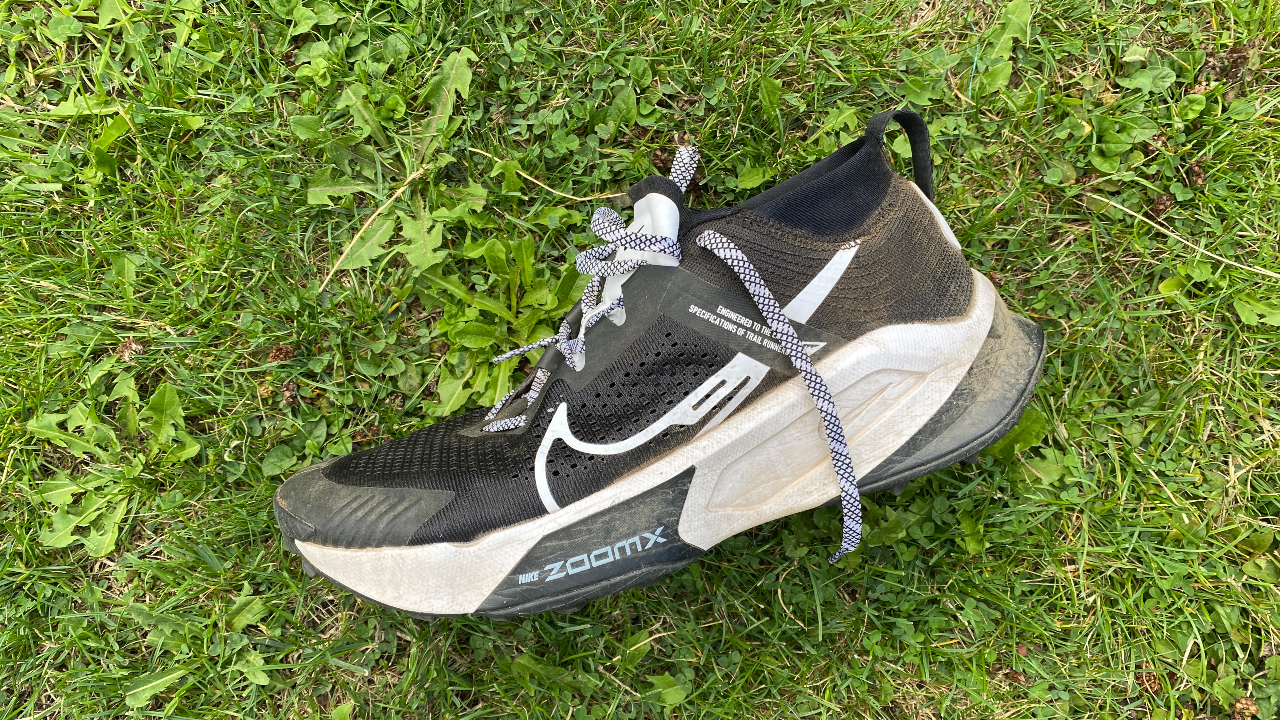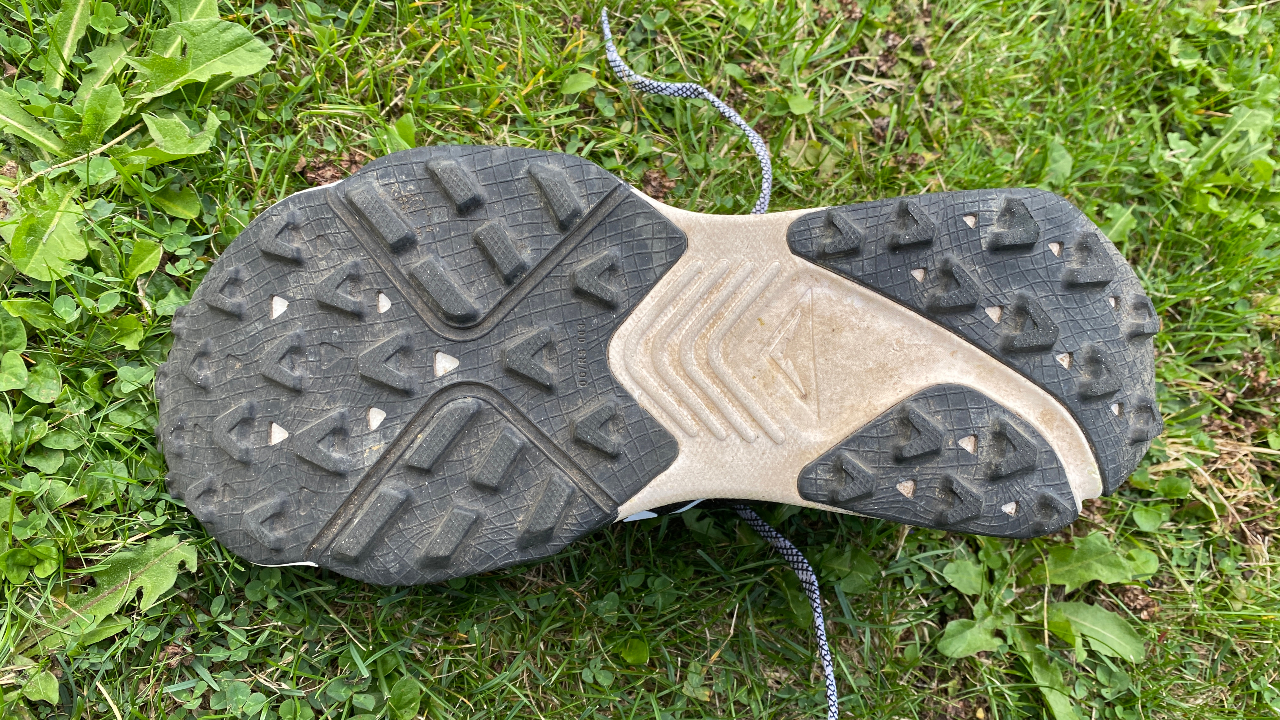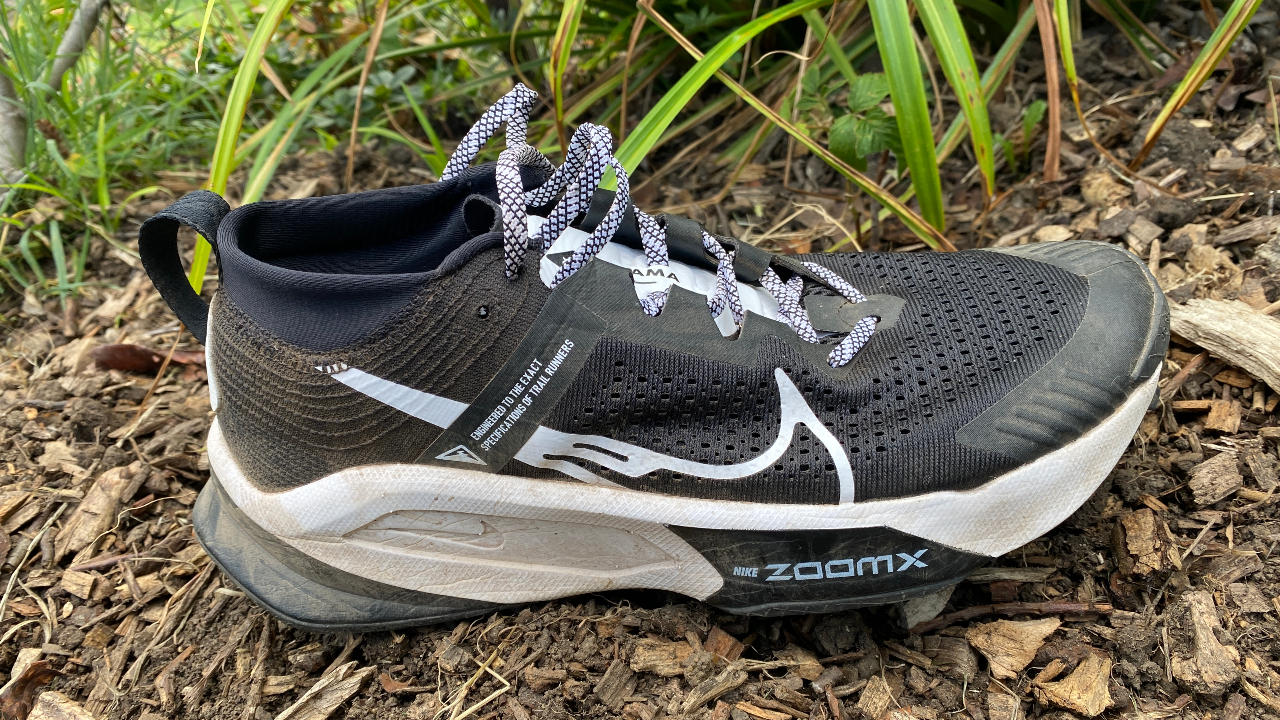Our Verdict
The Nike ZoomX Zegama is a comfortable trail shoe that excels on firmer tracks, but the ZoomX foam is muted compared to the bouncy road shoes that use it, and the outsole comes unstuck on wet ground.
For
- ZoomX foam in midsole
- Smooth ride
- Comfortable, protective upper
Against
- Not the lightest
- Slippery in the wet
You can trust Coach
There is always excitement when Nike launches a shoe with ZoomX foam in the midsole. That’s because the soft and springy foam is central to the success of some of the best running shoes, whether that means carbon plate racing shoes like the Nike Vaporfly and Alphafly or cushioned shoes like the Nike Invincible 2.
The Zegama is the first trail shoe from Nike to use the foam, and I was intrigued to see how ZoomX would work off-road, since part of the downside of its softness is a lack of stability.
In the end, the Zegama is a slight disappointment. It’s comfortable, and stands out in this regard even compared to the best trail-running shoes, but to ensure the Zegama is stable Nike has taken measures that mute the feeling of the ZoomX foam, and the ride is bland as a result. Worse still, the outsole doesn’t grip well on wet trails, a common problem with Nike’s trail shoes.
Nike ZoomX Zegama: Price And Availability

The Nike ZoomX Zegama is available now and costs $160 in the US and £144.95 in the UK. That makes it the most expensive trail-running shoe in Nike’s range ahead of longer-running lines like the Pegasus Trail and Terra Kiger. My sample for this review was provided by Sports Shoes.
Design And Fit
The giant midsole stack is the key feature on the Zegama and the first thing to note is that ZoomX is not the only foam used. As with the Nike Zoom Fly 5 road shoe, the Zegama uses a carrier foam called SR-02 to protect the soft ZoomX and create a stable frame around it, because of concerns that a ZoomX-only midsole would be too squishy on uneven ground.
It is fresh ZoomX foam, though, not the recycled version used in the Zoom Fly 5 and Pegasus Turbo Next Nature, and the ZoomX runs through the entire midsole. The stack height at the heel is 37mm and it’s 33mm at the forefoot for a drop of 4mm.
That’s a big stack, but even so it’s surprising that the Zegama weighs as much as 11.2oz/317g in a UK 8.5. That’s not especially heavy for a trail shoe, but it’s hefty for a shoe with a mostly ZoomX midsole, since it is such a light foam.
Sign up for workout ideas, training advice, reviews of the latest gear and more.

The mesh upper is breathable and has a protective toe bumper, and a gaiter at the heel that wraps around the ankle to reduce the amount of debris that can slip in. There is some padding around the heel and that section of the upper is reinforced to improve stability.
Nike has a bad reputation when it comes to outsoles on its trail-running shoes – the rubber used is infamous for poor grip in wet conditions. The outsole on the Zegama looks the part, with 4mm multidirectional lugs, but while it gripped well on a range of dry terrains, as soon as I tested the shoe on a hard wet surface it became worryingly skittish.
I tested an 8.5 in the Zegama, which is half a size down on my normal running shoe size, and the fit was perfect, with a good amount of room in the toe box even for long runs. Nike’s trail shoes often come up big for me, so I would suggest going half a size down.
How I Tested This Shoe

I have run 50km in the Nike ZoomX Zegama, mostly at an easy pace on a range of trails, including forest paths, canal towpaths, grass fields and muddy tracks.
Running Performance
As a big fan of Nike’s ZoomX road shoes, I harboured hopes the Zegama would be an Invincible 2 for the trails, but it was clear after a few steps in the shoe that this isn’t the case. It’s firmer and more stable, and those are good things in a trail shoe because squishy foams and uneven ground can be a recipe for disaster but, still, it would be nice to get more magic from the midsole of the Zegama.
The ride is undeniably comfortable and those tackling long training runs for ultra-marathons on tame terrain will enjoy using it. And it’s smooth when you’re on good trails and it’s nimble when on broken ground, though the high stack makes the shoe a little unwieldy when charging downhill on rutted ground.
But overall the ride is dull. It reminded me of the Hoka Speedgoat 5, but the Zegama is heavier and doesn’t have the pronounced rocker design of the Speedgoat, which makes the ride less enjoyable and fluid. You can run all day in the Zegama and it would protect your legs well, but I’d rather have the Speedgoat on for sure.

The Speedgoat also offers terrific grip on wet and dry trails, and this is not the case with the Zegama. You will have to be careful on wet ground when using it, especially when on rocks or in areas with lots of tree roots, which it slid straight off during my runs. The outsole does a good job on a range of dry trails including loose gravel but many other trail shoes, including those that use Vibram outsoles, grip better in the wet.
Is The Nike ZoomX Zegama Worth It?
Keep it dry and the Zegama is a great trail-running shoe for longer runs, even if the part-ZoomX midsole fails to live up to the expectations created by Nike’s road shoes. The Zegama also looks good, which is a feature across most of Nike’s trail shoes, and not a common one in the trail shoe world.
However, the Zegama only excels at providing comfort on harder trails. While the Zegama is the best Nike running shoe for trails, there are many more versatile trail shoes out there, such as the Saucony Peregrine 12 and the Hoka Speedgoat 5. The Speedgoat is more enjoyable to use even when on the Zegama’s favoured terrain, as well as being cheaper.

Nick Harris-Fry is a journalist who has been covering health and fitness since 2015. Nick is an avid runner, covering 70-110km a week, which gives him ample opportunity to test a wide range of running shoes and running gear. He is also the chief tester for fitness trackers and running watches, treadmills and exercise bikes, and workout headphones.

